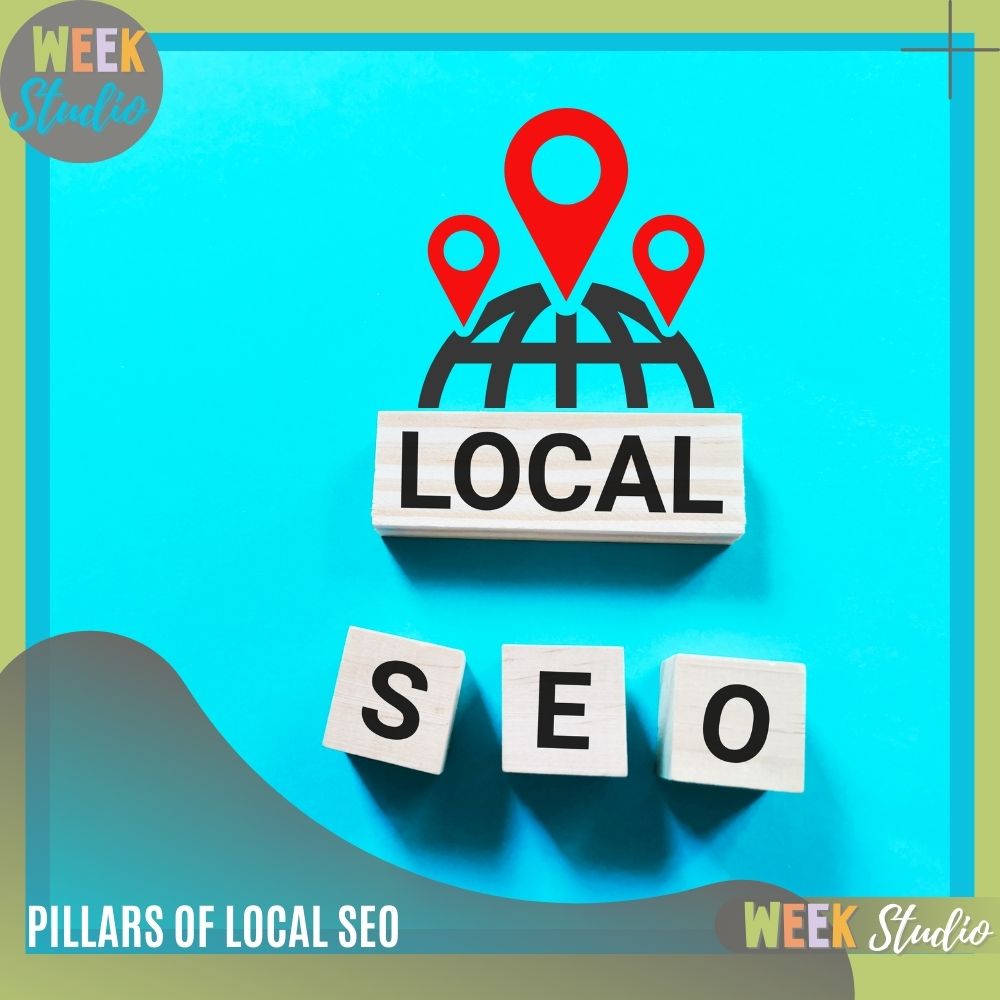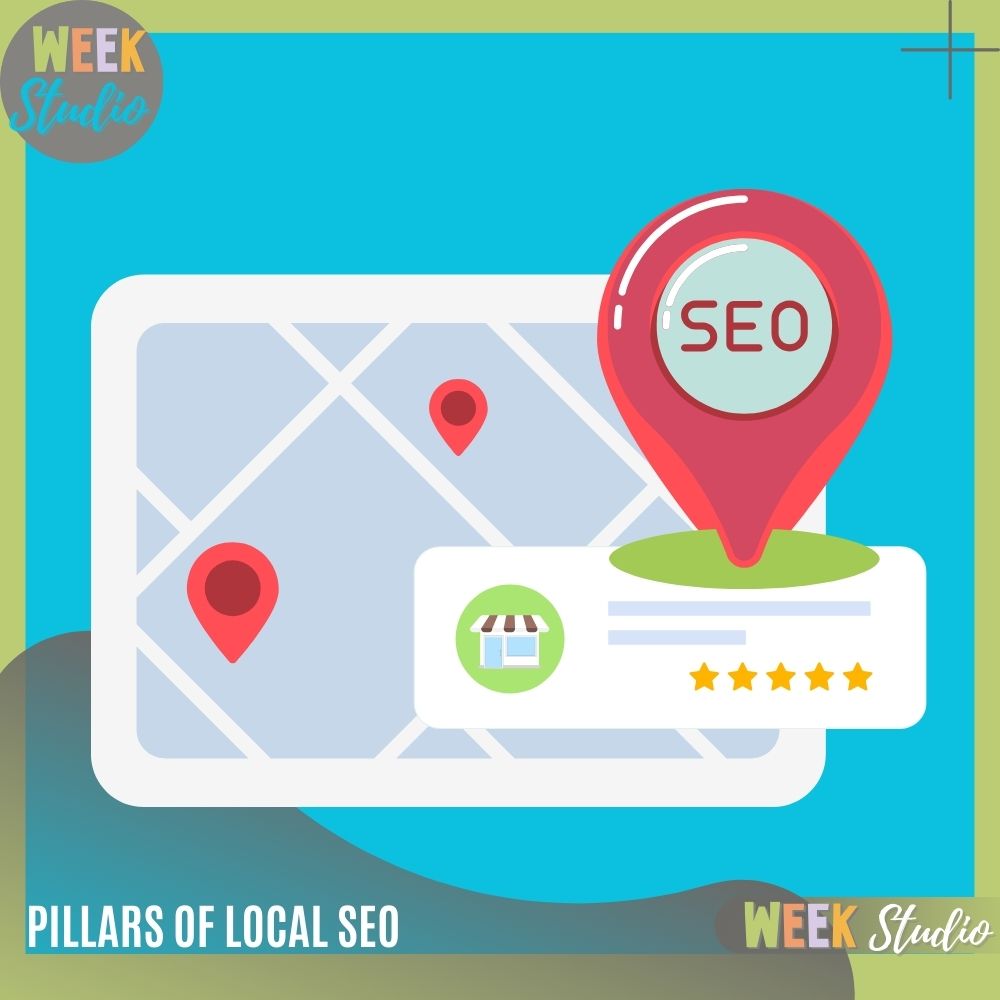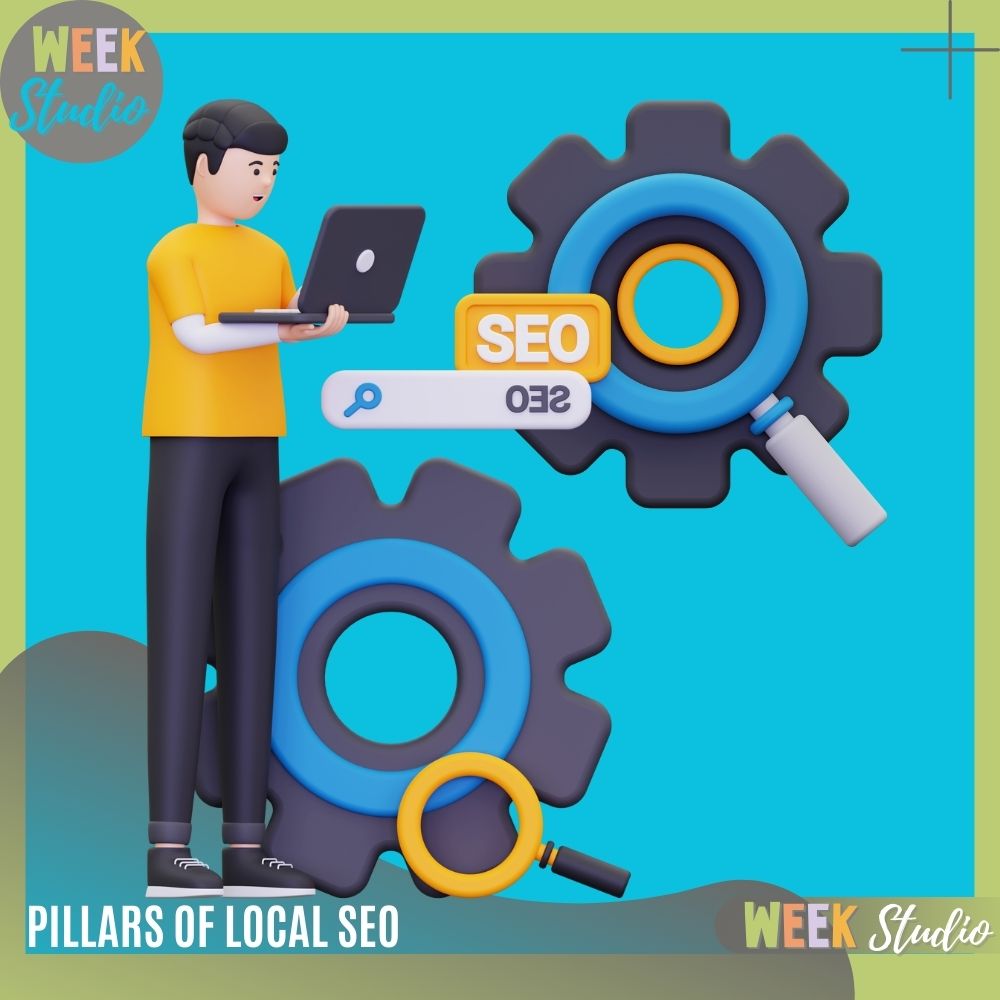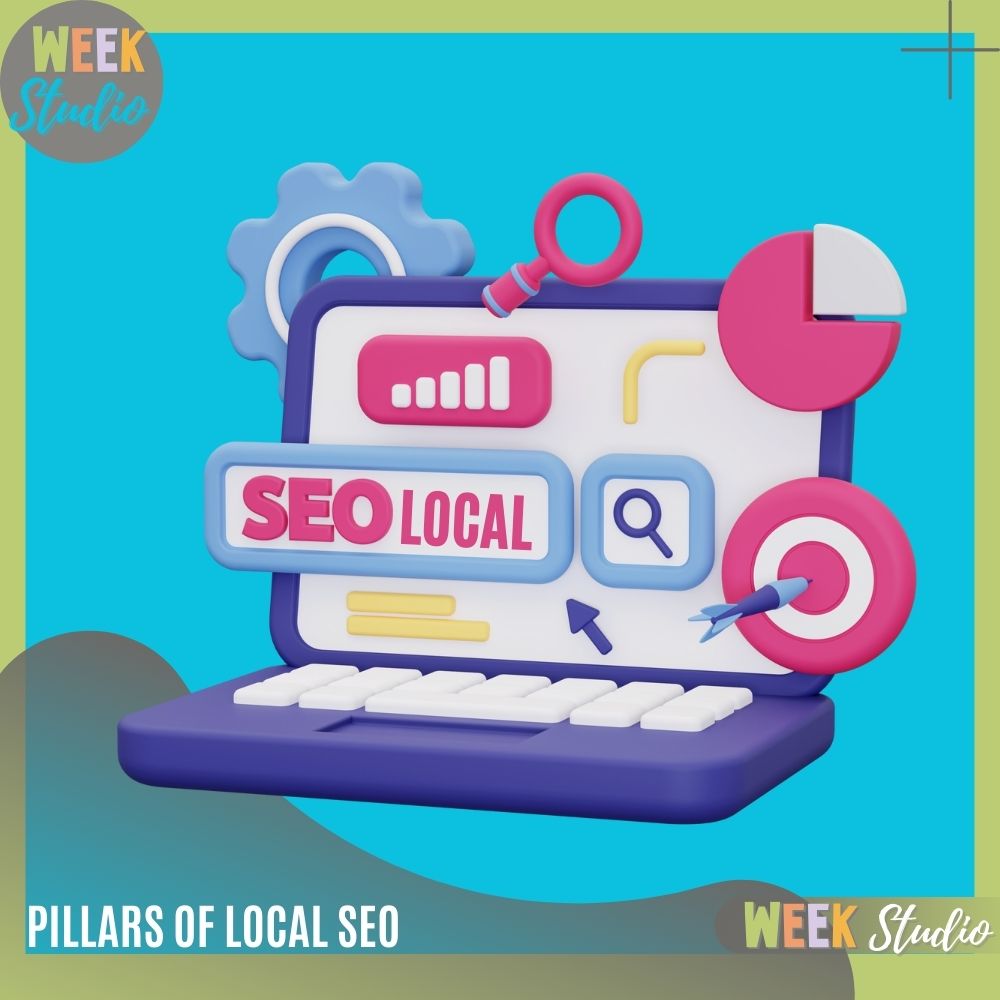Local SEO is a crucial aspect of digital marketing that focuses on optimizing a website’s visibility and presence in local search engine results. It helps businesses attract more customers within their geographical location and gain a competitive edge over their local competitors. While there are various strategies and techniques involved in local SEO, it primarily revolves around three key pillars: relevance, proximity, and prominence. In this article, we will delve into each of these pillars in detail to understand their significance and how they contribute to a successful local SEO strategy.
What Are The 3 Pillars Of SEO?

There are three main pillars of SEO: on-page optimization, off-page optimization, and technical optimization.
On-page optimization is the process of optimizing your website’s content and structure for the purpose of ranking higher in search engine results pages (SERPs). This includes things like optimizing your title tags and meta descriptions, adding keywords to your content, and improving your website’s loading speed.
Off-page optimization is the process of improving your website’s visibility and authority in search engine results pages by building links from other websites. This includes things like generating citations and guest posting on high-quality websites.
Technical optimization is the process of optimizing your website’s infrastructure and coding for the purpose of improving its search engine visibility. This includes things like optimizing your website’s robots.txt file and XML sitemaps, and improving your website’s page loading speed.
What Are The Pillars Of SEO Success?

There are many factors that contribute to the success of an SEO campaign, but some factors are more important than others. Here are four of the most important pillars of SEO success:
- Good Content: One of the most important factors in SEO is good content. Google rewards websites that publish high-quality, relevant content that provides value to their readers. If you want to rank high in Google, you need to publish content that is interesting, informative, and engaging.
- Technical SEO: Another important factor in SEO is technical SEO. This involves optimizing your website for Google’s search engine crawlers. You need to make sure your website is coded correctly, your titles and meta descriptions are properly optimized, and your website is fast and mobile-friendly.
- Link Building: Link building is another important factor in SEO. In order to rank high in Google, you need to have links from high-quality websites. You can achieve this by publishing high-quality content that is interesting and engaging, and by doing link building outreach.
- Social Media Social media is also an important factor in SEO. In order to rank high in Google, you need to have a strong social media presence. You can achieve this by publishing high-quality content that is relevant to your target audience, and by using social media optimization techniques.
How Many Pillars Of SEO Are There?

There are many schools of thought when it comes to SEO, but most experts agree on the fundamentals. Generally, there are four pillars of SEO: on-page optimization, technical optimization, link building, and content marketing. On-page optimization is the practice of improving the ranking of a website by optimizing its content and structure. This includes optimizing the title tags, meta descriptions, header tags, images, and other elements that influence how a site performs in search engines.
The quality and quantity of links pointing to a website is one of the most important factors that search engines consider when ranking websites. Content marketing is the practice of creating valuable content that attracts links and social shares. Content marketing is one of the best ways to improve your website’s search engine ranking.
Technical optimization is the practice of improving the ranking of a website by improving its ability to be crawled and indexed by search engines. This includes optimizing the site architecture, robots.txt file, and internal linking structure. One of the most effective ways to improve your website’s search engine ranking is to perform a link audit and identify low-quality links that could be harming your website’s ranking. You can then disavow those links to ensure that they don’t have a negative impact on your website’s ranking.
What Are Content Pillars In SEO?

In SEO, content pillars are key topics or themes around which you center your content. By developing a content pillar strategy, you can create a more cohesive and effective SEO campaign.
When it comes to SEO, the most important thing is to create content that is valuable and relevant to your target audience. But it can be difficult to come up with new and interesting content ideas on a regular basis. That’s where content pillars come in. A content pillar is a key topic or theme around which you center your content.
There are a few things to keep in mind when creating content pillars:
- Choose a topic that you can write about in depth.
- Choose a topic that you can cover on a regular basis.
- Choose a topic that is keyword-rich.
So let’s explain each of this list’s element, firstly how to Choose a topic that is relevant to your audience and The Role of Social Media in SEO.
There is no question that social media is an important part of SEO. The two go hand in hand, with social media helping to improve SEO and SEO helping to improve social media. But how exactly do they work together? One of the most important ways that social media helps SEO is by providing links to your website. The more links you have, the higher your website will rank in search engine results pages (SERPs). And since social media websites are so popular, they can provide a lot of links quickly and easily.
In addition, social media can help to improve SEO by increasing the amount of content you have on your website. The more content you have, the more keywords you can use, and the more likely you are to rank high in SERPs. And since social media is all about creating and sharing content, it can be a great way to improve your SEO. One popular way to make extra money is to start a side hustle. A side hustle is a business or venture that you start in addition to your day job. There are many different types of side hustles, and many different ways to make money with them.
One popular side hustle is freelance writing. Freelance writing is a great way to make money because you can work from home, and you can choose the projects you want to work on. There are many different types of freelance writing, and many different ways to find freelance writing jobs. Job boards are websites where employers post job openings, and job seekers can apply for jobs. There are many different job boards, and each one has different jobs.

There are many reasons to blog, but one of the most important is that it can help you establish yourself as an expert in your field. When you blog regularly on a topic, you become known as an authority on that topic. When people are looking for information on a particular subject, they will often turn to the internet to find an expert to answer their questions. If you are the person that they find, you will be the one who gets the business.
Blogging also provides you with an opportunity to reach a large audience. The internet is a vast place, and there are millions of people who are looking for information on a wide variety of subjects. When you blog about a topic that interests you, you can reach all of these people and help them learn more about what you know.
SEO, or search engine optimization, is the practice of increasing the quantity and quality of traffic to a website from search engines. The purpose of SEO is to improve the visibility of a website in search engine results pages (SERPs), thereby increasing the number of visitors to the website. SEO is a long-term process that requires ongoing effort. The most important part of SEO is creating valuable content that will attract links from other websites. The quality and quantity of links are the most important factors in determining a website’s visibility in search engine results pages.
SEO is a complex and ever-evolving field. The best way to stay up to date with the latest trends is to subscribe to an SEO blog or read an SEO magazine. There are also many SEO forums and discussion groups where you can learn from other SEO professionals.
Relevance Of Local SEO

The first pillar of local SEO is relevance, which refers to how well a business’s website matches a user’s search intent. To improve relevance, businesses must optimize various elements on their website, including content, keywords, and meta tags. Here are some key factors to consider:
Content Optimization
Creating high-quality, informative, and relevant content is essential for local SEO. Businesses should focus on producing content that addresses their target audience’s needs, answers their questions, and provides valuable insights. Additionally, incorporating local keywords and location-specific information into the content can help improve relevance.
On-Page SEO
Optimizing on-page elements such as title tags, meta descriptions, headings, and URLs is crucial for local SEO. Including relevant keywords and location-specific information in these elements helps search engines understand the content and rank it higher in local search results.
NAP Consistency
NAP (Name, Address, Phone number) consistency plays a vital role in local SEO. It is essential to ensure that the business’s NAP information is consistent across all online directories, review sites, and social media platforms. Inconsistencies can confuse search engines and negatively impact local search rankings.
Proximity
The second pillar of local SEO is proximity, which refers to how close a business is to the user’s physical location. Proximity plays a significant role in local search rankings, especially for location-based queries such as “restaurants near me” or “plumbers in [city].”
Google My Business (GMB) Optimization

Optimizing the Google My Business listing is crucial for local SEO. Businesses should ensure that their GMB profile is complete, accurate, and up to date. This includes providing the correct business name, address, phone number, business hours, website URL, and other relevant information. Additionally, regularly posting updates, responding to reviews, and adding photos can further enhance the GMB listing’s visibility.
Local Citations
Building local citations is another important aspect of proximity optimization. Local citations are online mentions of a business’s NAP information on various directories, review sites, and local listings. Businesses should ensure that their NAP information is consistent across all citations and that they are listed on reputable and relevant platforms.
Local Link Building
Building high-quality local backlinks can significantly impact local search rankings. Businesses should focus on acquiring links from local websites, directories, and organizations. These links help search engines understand the business’s relevance and proximity to the local area.
Prominence
The third pillar of local SEO is prominence, which refers to a business’s online reputation and authority within the local community. Prominence is determined by various factors such as online reviews, ratings, backlinks, and social media presence.
Online Reviews
Positive reviews not only influence potential customers but also signal to search engines that the business is reputable and trustworthy. Encouraging customers to leave reviews, responding to both positive and negative reviews, and addressing customer concerns can help build a strong online reputation.
Backlinks and Social Signals

Building high-quality backlinks and having a strong social media presence are crucial for local SEO. Backlinks from authoritative and relevant websites signal to search engines that the business is prominent and trustworthy. Similarly, an active and engaged social media presence demonstrates the business’s authority and popularity within the local community.
Local Directories and Associations
Getting listed on reputable local directories and associations can boost a business’s prominence in local search results. Being associated with local organizations and industry-specific directories helps establish trust and credibility.
Conclusion
Local SEO is a multifaceted process that involves optimizing various elements on a website to improve relevance, proximity, and prominence. By focusing on these three pillars, businesses can enhance their local search visibility, attract more customers within their target area, and gain a competitive advantage in the local market. Implementing a robust local SEO strategy that incorporates these pillars will help businesses thrive in an increasingly competitive digital landscape.
